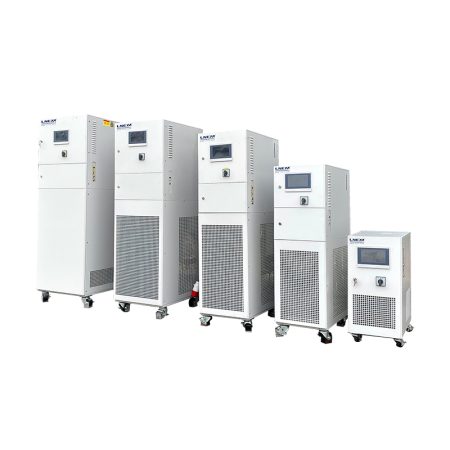Water chiller and heater is a widely used automatic control system, which can help us achieve precise temperature control and improve production efficiency. Temperature control systems are used in many industries such as manufacturing, food processing and agriculture. Below, we will delve into the principles, applications and future development trends of temperature control systems.
First, principle
Die water chiller and heater is used to measure, monitor and control the temperature. It consists of several components, including sensors, controllers, actuators and displays. Sensors are used to measure the ambient temperature and transmit the data to the controller. The controller is a central processing unit responsible for receiving and processing the data provided by the sensor, and making judgments and processing according to the preset temperature range. The actuator then adjusts the temperature according to the controller’s command to keep it within the preset range. Finally, the display is used to display the real-time situation of the ambient temperature and the parameters set by the controller.
Water chiller and heater can be realized by different technologies:
1. Constant temperature control: The constant temperature control system refers to setting a constant temperature through the controller to keep the ambient temperature stable. When the ambient temperature is higher or lower than the predetermined temperature, the sensor will detect the temperature difference and transmit the signal to the controller, and the controller instructs the actuator to increase or decrease the ambient temperature.
2. Variable temperature control: The variable temperature control system allows the temperature to fluctuate within a certain range. When the temperature is close to the upper or lower limit, the actuator will be instructed by the controller to increase or decrease the ambient temperature to bring the temperature back to the preset range. This control method is suitable for industrial or experimental operations that require temperature changes.

Second, apply
1. Manufacturing
Temperature control systems are often used in manufacturing, especially in high-precision manufacturing. For example, in automobile engine manufacturing, engine parts require precise temperature control to ensure part quality and reduce working time. The temperature control system can monitor and control the temperature of machine parts to ensure the stability of the production environment and improve production efficiency.
2. Food processing industry
In food processing, temperature control systems are also widely used. For example, when baking bread and pastries, strict temperature and time control are required to ensure product quality and food safety. The temperature control system monitors and controls the temperature of the oven, grill and griddle and makes fine adjustments as needed.
3. Agriculture
In agriculture, water chillers and heaters are usually used in greenhouses. For example, the temperature in the greenhouse in winter needs to be strictly controlled to ensure the growth of crops. The water chiller and heater can realize constant temperature or variable temperature control to meet the growth needs of different types of crops.
Third, the future development trend
With the continuous development of technology, there will be more innovations and improvements in water chiller and heater in the future. Here are a few future trends:
1. Application of cloud technology and Internet of Things
By using cloud technology and Internet of Things, water chiller and heater can be better monitored and controlled remotely. Technological developments will increase the scalability and customization capabilities of water chillers and heaters.
2. Application of AI technology
AI technology has become a hot topic in many industries. Applying AI technology to water chiller and heater can help improve control accuracy and enable intelligent monitoring and control.
3. Application of new materials
The development of new materials will make the controller lighter and stronger. New materials can also make sensors more sensitive and have higher control precision.
 LNEYA
LNEYA
 简体中文
简体中文


















































































